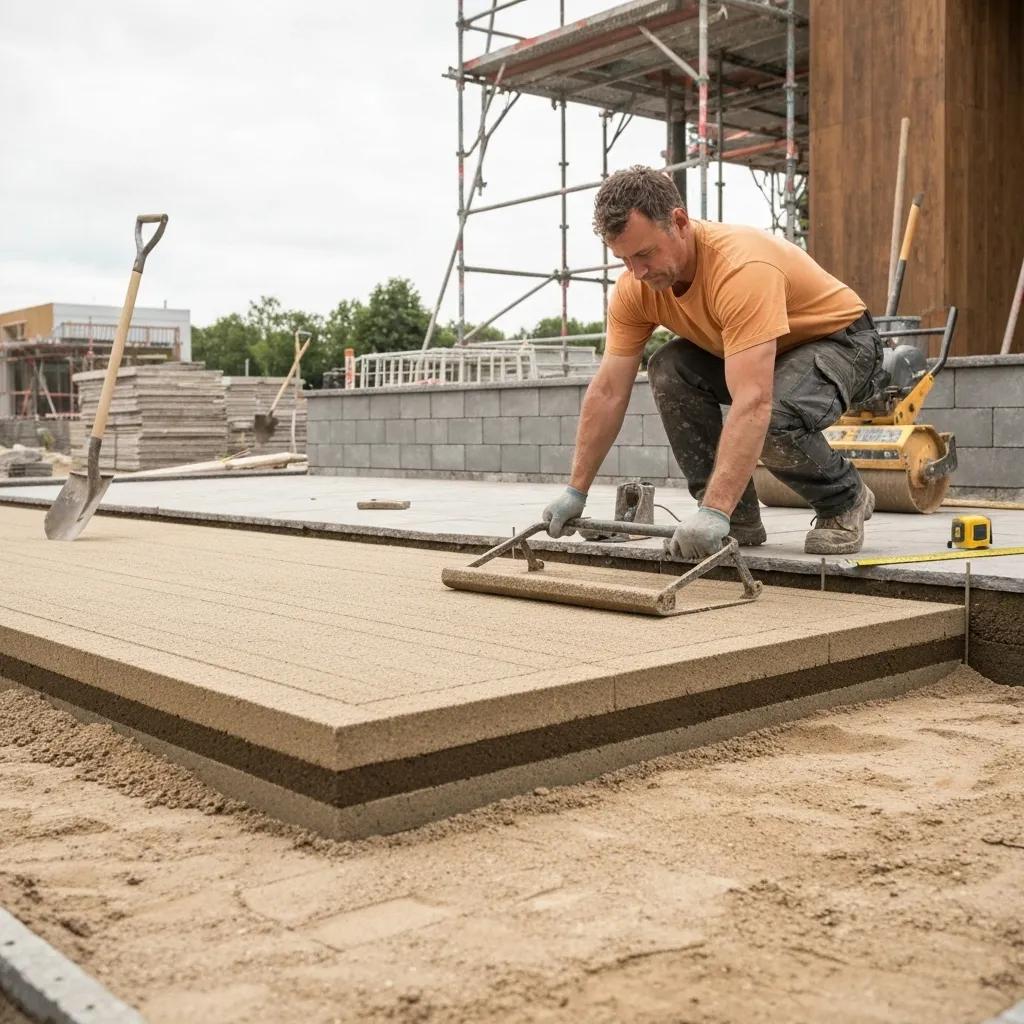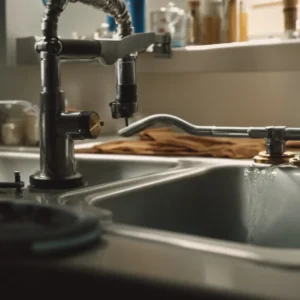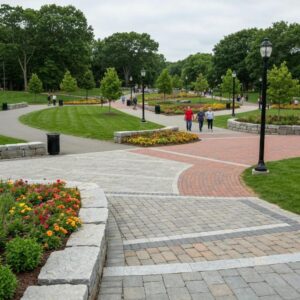Expert Patio Installation in New England: Base Preparation and Drainage Solutions for Lasting Outdoor Spaces
A poorly prepared patio base and inadequate drainage can turn your dream outdoor living area into a costly maintenance problem, especially under New England’s freeze-thaw cycles and heavy rainfall. In this guide on patio installation, you’ll discover how proper sub-base techniques and water-management systems deliver durability, prevent shifting, and protect foundations. We cover why base preparation matters, proven drainage strategies, climate-specific design adaptations, the step-by-step professional installation process, material and style recommendations, local service options in Billerica, Burlington, and Lexington, MA, and answers to top performance questions. By following these best practices, homeowners can achieve a long-lasting, attractive patio that enhances property value and resists the region’s toughest conditions.
Why Is Proper Patio Base Preparation Critical for New England Homes?
Proper patio base preparation combines sub-base stability, drainage capacity, and frost-heave prevention into a single foundation that anchors pavers securely. A well-prepared base distributes loads evenly across the patio, mitigates soil movement caused by freezing and thawing, and channels water away from structures. For example, installing a 6-inch crushed-stone sub-base beneath pavers can reduce heaving by more than 50% compared to an uncompacted soil layer.
Effective base preparation sets the stage for every subsequent installation step and protects your outdoor investment through volatile winter cycles.
What Soil Conditions Affect Patio Base Requirements in Massachusetts?
Massachusetts features a range of soil textures, from dense glacial clay to well-draining sandy loam. Clay-rich soils hold moisture, increasing frost-heave risk, while sandy soils shed water quickly but may require thicker aggregate layers for stability. Identifying your site’s soil type through a simple percolation test or local soil survey ensures the correct sub-base depth and material selection for optimal drainage and load support in a freeze-thaw environment.
How Deep Should a Patio Base Be for New England’s Freeze-Thaw Climate?

A New England patio base typically requires 6–8 inches of compacted aggregate to resist frost heave and maintain level surfaces year-round. By installing 4–6 inches of open-graded crushed stone over a 2-inch bedding layer of coarse sand, professionals establish both a stable structure and efficient rainwater percolation. This depth prevents ground movement from disrupting paver alignment, supporting long-term patio performance.
Which Materials Are Best for Patio Bases in New England?
Selecting the right aggregate balances load distribution with water flow. The table below compares common base materials used in regional patio installations:
| Material | Particle Size | Drainage & Stability |
|---|---|---|
| Crushed Stone | ¾-inch minus | Provides interlocked support and channels water |
| Open-Graded Gravel | ½–¾-inch | Maximizes permeability and reduces frost heave risk |
| Bedding Sand | 0.1–0.5 mm | Creates a smooth setting layer and joint stability |
These aggregates form a multi-layer foundation that resists soil movement and promotes rapid runoff, ensuring pavers stay level through seasonal cycles.
How Does Compaction Improve Patio Base Stability?
Compaction increases load-bearing capacity by reducing voids between aggregate particles, preventing settlement and freeze-thaw displacement.
- Place stone in 2-inch lifts.
- Use a plate compactor to reach 95% Proctor density.
- Apply water mist to aid particle alignment.
Proper compaction transforms loose stone into a tightly interlocked mass that supports paver weight and discourages water infiltration below the bedding layer.
What Are the Most Effective Drainage Solutions for Patios in New England?

Efficient patio drainage protects both the patio surface and adjacent structures by guiding water away from foundations and preventing pooling. Integrating slope, permeable materials, and subsurface channels ensures a comprehensive approach to stormwater management that fits New England’s wet seasons.
How Do You Design Proper Slope for Patio Water Runoff?
A consistent slope of ¼ inch per foot, slanting away from buildings, is critical for surface drainage.
- Measure slope with a level and string line.
- Adjust bedding sand to achieve uniform pitch.
- Confirm run-off direction before locking pavers.
This grading directs rainwater into landscaping beds or drainage trenches, reducing erosion and foundation seepage.
What Are the Benefits of Permeable Pavers for Patio Drainage?
Permeable pavers allow stormwater to filter through joints into a gravel reservoir, recharging groundwater and reducing runoff. They improve site hydrology, comply with local runoff regulations, and minimize surface pooling. In a Billerica, MA residence, installing permeable units reduced backyard puddling by 90% after heavy storms, while also supporting lush lawn edges.
When Should You Use French Drains and Catch Basins Around Patios?
French drains capture subsurface water, while catch basins handle concentrated surface flow.
- Deploy French drains when groundwater seeps beneath pavers.
- Position catch basins at low points where runoff concentrates.
- Connect both to perforated pipes that lead to safe discharge points.
By combining these systems at strategic locations, landscapers ensure that excess water never undermines the patio foundation.
How Can You Prevent Water Pooling and Erosion Near Patios?
Implement these preventive measures to maintain slope integrity and soil stability:
- Install edging restraints to contain aggregate layers.
- Add rip-rap or dry creek beds where runoff is heaviest.
- Include landscaping beds with water-tolerant plants at slope termini.
These elements slow water velocity, reduce soil washout, and preserve patio edges over time.
How Does New England’s Climate Impact Patio Base and Drainage Design?
Regional climate exerts a powerful influence on foundation performance and water-management requirements. Adaptation to freeze-thaw stress and high rainfall ensures patios withstand seasonal extremes without cracking, heaving, or flooding.
What Challenges Do Freeze-Thaw Cycles Present for Patio Foundations?
Repeated freezing and thawing can cause differential soil expansion, leading to uneven paver movement and joint deterioration. Without a frost-resistant base, ice lens formation under patio units pushes surfaces upward, creating trip hazards and compromising the structural integrity of the installation.
Which Base Materials Resist Frost Heave Best in Massachusetts?
A combination of dense, angular aggregates and separation fabrics minimizes subsurface moisture accumulation:
| Material | Resistance Level | Mechanism |
|---|---|---|
| Granite Chips | High | Low water absorption and strong interlock |
| Open-Graded Gravel | Moderate | Rapid drainage prevents ice lens formation |
| Geotextile Fabric | N/A | Separates clay soils from aggregate layers |
How Does Heavy Rainfall Influence Drainage Planning in New England?
Intense rain events demand high-capacity runoff routes and permeable surfaces. Designing patios with multiple drainage components—slope grading, permeable pavers, trench drains, and catch basins—ensures rapid water evacuation and reduces stress on municipal storm systems.
What Is the Step-by-Step Process for Professional Patio Installation in New England?
Professional patio installation services combine precise planning, skilled excavation, and expert material handling to deliver a durable outdoor space.
How Is Site Excavation and Preparation Conducted?
Contractors begin by marking the patio outline, removing vegetation and topsoil to the required depth, and verifying subgrade compaction. This initial groundwork creates a uniform base for subsequent aggregate and bedding layers.
What Are the Layers Involved in Patio Base Construction?
A properly built patio base consists of:
- Subgrade Soil – Compacted native ground.
- Sub-Base Aggregate – 4–6 inches of crushed stone.
- Bedding Layer – 1–2 inches of coarse sand.
- Paver Units – Installed with tight joint spacing.
Each layer has a distinct function: foundational support, drainage, leveling, and surface finish.
How Are Drainage Systems Integrated During Installation?
Drainage features are installed concurrently with base layers:
- Slope grading is set in the bedding sand.
- French drains and perforated pipes are placed at the sub-base level.
- Catch basins connect to surface inlets before paver placement.
This integration ensures water-management components work seamlessly with the structural foundation.
What Finishing Steps Ensure Long-Term Patio Durability?
- Fill paver joints with polymeric sand to lock units and inhibit weed growth.
- Seal the surface to repel stains and prevent sand wash-out.
- Compact the entire patio with a plate compactor using a pad attachment.
- Perform a final inspection and clean-up to remove debris.
These steps reinforce integrity, enhance appearance, and safeguard the investment.
Which Patio Materials and Designs Are Best Suited for New England Homes?
Choosing frost-resistant materials and drainage-friendly designs elevates both function and curb appeal in local landscapes.
What Types of Pavers Withstand New England Weather?
- Natural Bluestone – Dense, slip-resistant, freeze-proof.
- Concrete Pavers – Engineered for uniform performance and color retention.
- Reclaimed Brick – Classic look with proven durability.
Each option offers distinct aesthetic and performance benefits for year-round use.
How Can Patio Design Incorporate Effective Drainage Features?
- Sloping seating areas toward garden beds.
- Including linear drains beneath fire-pit surrounds.
- Mixing permeable sections with solid pavers for controlled infiltration.
These design choices maintain surface dryness without compromising visual harmony.
What Outdoor Living Features Complement Patio Drainage Systems?
- Fire pits raised on pedestals to avoid water trapping.
- Retaining walls with weep holes for soil drainage.
- Rain gardens adjacent to low-spots for natural absorption.
These features enhance usability and tie landscape flow into sustainable runoff control.
Where Can You Find Expert Patio Installation and Drainage Services in Billerica, Burlington, and Lexington, MA?
Local homeowners rely on a trusted regional contractor to deliver climate-adapted patio solutions.
What Makes Cut Above Landscaping Inc. a Trusted New England Patio Contractor?
- Over 20 years of specialized patio installation service.
- Proven frost-resistant base techniques and advanced drainage designs.
- Fully licensed crews serving Billerica, Burlington, and Lexington, MA.
- Comprehensive warranties and post-installation support.
These credentials ensure your patio stands up to every season.
How Have Local Case Studies Solved Patio Drainage Challenges?
In Burlington, an under-grade catch basin prevented water pooling at a property line by redirecting runoff into a dry well. In Lexington, permeable pavers and trench drains eliminated surface flooding next to a pool deck. These examples illustrate how tailored solutions resolve site-specific issues.
How Can Homeowners Request a Free Patio Installation Consultation?
Homeowners can contact Cut Above Landscaping Inc. through their website or by calling the office directly. A no-obligation site visit assesses soil conditions, slope requirements, and design preferences, leading to a customized proposal.
What Are the Most Common Questions About Patio Base Preparation and Drainage in New England?
Understanding key details helps homeowners set realistic expectations and choose the right methods for lasting results.
What Is the Best Base Material for a Patio in New England?
Crushed stone aggregate is the top choice—it provides angular interlock for stability, resists frost-heave forces, and channels rainwater effectively within the sub-base.
How Thick Should a Patio Base Be for Optimal Drainage?
A compacted base of 6–8 inches of open-graded stone beneath a 1-inch sand layer delivers both frost-heave resistance and efficient runoff control.
How Do You Maintain Patio Drainage Systems Year-Round?
- Keep catch-basin grates clear of leaves and debris.
- Inspect trench drains after heavy storms.
- Replenish polymeric joint sand to prevent wash-out.
Regular maintenance preserves water-management performance and extends patio life.
Can Permeable Pavers Reduce Stormwater Runoff Effectively?
Yes, permeable pavers enable up to 95% of rainfall to infiltrate the base aggregate, reducing surface runoff and promoting groundwater recharge while meeting local stormwater regulations.
A durable patio foundation and well-designed drainage network work together to withstand New England’s extreme weather and protect your investment. By following the best practices outlined here, you ensure long-term stability, prevent costly repairs, and enjoy an attractive outdoor living space. Partner with a regional expert to customize these solutions for your property and schedule a free consultation to transform your backyard into a resilient retreat.






